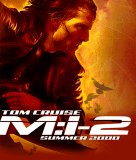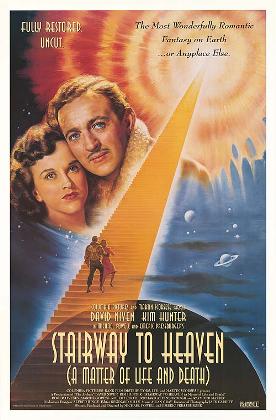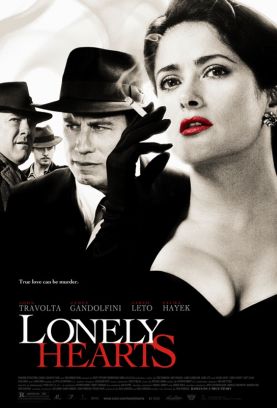M:I-2
M:I-2, directed by John Woo and written by Robert Towne, is like the
original Mission Impossible (1996) in being a postmodern-style romance of
technology. The earlier film, which was directed by Brian de Palma, did for the
deus ex machina what Shakespeare did for the Aristotelian unities, which
is to say that it blew the all old rules and prohibitions out of the water.
Neoclassical critics used to think it funny and a sign of bad art when an author
discovered that he’d got his
characters into difficulties he
couldn’t well get them out of and so
was forced to introduce into the proceedings a divine personage of some
description winched onto the stage in order to suspend the usual laws of nature
and get the good guys off the hook. In Mission Impossible the
machinae were virtually the same as the dei, and both were as
plentiful and as unremarkable as beetles.
It was still funny when the old god is lowered from the flies, but now it was
good-funny. The god and the author were laughing with us at the absurdity of
their intervention in what might otherwise have appeared to be human events. So
when Tom Cruise as Ethan Hunt laughingly undertook to break into the secure
vault at CIA Headquarters in Langley, Virginia, in order to steal the most
secret information that the CIA possessed, we knew at once that he would
succeed. In Mr Woo’s film, we have only to see the “self-destructing” talking
sunglasses delivered from headquarters and we know already that the allegedly
“impossible” mission is already in the bag. Or, if we didn’t, the point is
driven home by Mr Cruise’s spectacular self-rescue, which we have just witnessed
at the point where the sunglasses arrive, after he has been dangling by his
fingertips from an isolated butte in Utah. Impossible escapes are what this guy
does for recreation.
Both films offer us the cinematic equivalent of
Tertullian’s maxim: we believe because
it is impossible. Presumably it would not make it onto the screen in the first
place if it were only difficult or unlikely. But the great god into whose
mysteries we are made initiates is technology. Deus and machina
are again functionally equivalent. Thus, in Mission Impossible, when Hunt
is crawling through the air-conditioning ducts at Langley (one trusts that the
real CIA has since taken the trouble to make its ductwork less accessible) and
finds a laser screen which might otherwise prevent his egress from the ducts
into the vault, he reaches back into his little tool-kit and takes
out—what else?—a laser screen neutralizer! No doubt he just picked
one up at Radio Shack. For every measure there is an instantly available
countermeasure already in the omniscient MI bag of tricks.
Obviously, a film like this one sets little store by either plausibility or
suspense, and M:I-2 is clearly out of the same stable. But there are also
some new, Wooish wrinkles. On several occasions, for instance Mr Cruise’s hero
is seen in unfamiliar and shocking situations, as the ally or the victim of
terrorists. Thereupon, like John Travolta and Nicholas Cage in Mr Woo’s
Face/Off (1997), he peels off the high-tech prosthesis covering his face
to reveal that he is really one of the bad guys, or that one of the bad guys is
really him. In one situation, the ever-reliable MI tool kit
apparently allows him to apply this elaborate latex makeup in the space of about
ten seconds, not only to himself but to his antagonist in one of the film’s
acrobatic kicking-fights. And this amazing feat of speed-maquillage is all so
that the ally of the latter will think (briefly) that the fight has come out the
other way—his way—and will too late discover that he has finished
off not Hunt but his old pal and henchman.
One cannot but wonder what kind of audience takes pleasure in being deceived
in this perfunctory, almost contemptuous fashion? Presumably, in the
technological romance pace and timing are everything, so there is just no time
to lay down a false trail for the reader to follow. Instead, something happens
to divert us for a moment from the inevitable conclusion to which all has been
tending, then the characters pull off their faces, or take out of some pocket or
bag the necessary machine or weapon, and we are instantly back on track again.
Instead of a narrative switch-back, it is a journey on greased rails to the
point at which Mr Cruise and his love-interest, Nyah (Thandie Newton), an
Anglo-Caribbean cat-burglar with a heart of gold, foil the plot of a terrorist
gang led by a former MI colleague called Sean Ambrose (Dougray Scott) to infect
Australia with a killer virus.
In favor of this film (as opposed to Mission Impossible) the plot is
at least more or less comprehensible, if still wildly implausible and
politically paranoid. A Russian scientist (Radé Sherbedgia) working for
an Australian pharmaceutical company called Biocyte has developed both the
horrible Chimera virus and its antidote, Bellerophon. The wicked head of
Biocyte, amusingly called John McCloy (Brendan Gleeson), makes a brief
appearance on behalf of the evils of capitalism, explaining that his company can
make a fortune by spreading this deadly virus and then selling people the
patented antidote. Naturally the terrorist Ambrose, who stole the thing from the
Russian scientist, killed him and crashed the commercial airliner in which he
had been traveling to the Center for Disease Control in Atlanta, chooses to
forego his multi-million dollar ransom in favor of stock-options in Biocyte.
On the case is not only the rather depleted MI force, consisting of Mr
Cruise’s Ethan Hunt, the hulking computer genius Luther Stickell (Ving Rhames)
and an Aussie helicopter pilot called Billy Baird (John Polson), but also the
fetching Nyah, who comes into the caper as a former girl-friend of Ambrose.
Having formed a sexual liaison with this allegedly conscience-less thief, Hunt
is forced against his own conscience to appeal to her (fortunately robust)
idealistic side to make her return to this monster, who continues to carry a
torch for her, so that she can lead Hunt’s men to him—with the help of an
implanted homing device tracked by Luther on his trusty laptop. Of course she is
discovered and, in an effort to save Hunt from the terrorists, injects herself
with the virus.
This self-inoculation makes no more sense than that of the Russian scientist,
which begins the film, but it leads to a climax in which there is a race against
time to get the antidote to her, or her to it, before she dies a horrible death.
She, being not of the initiate and therefore of little faith, pleads with Hunt
to kill her swiftly: “I’m infected with chimera; you haven’t got a choice. Do
it; do it now!” It is the language of real human drama, which often takes place
in reaction to situations where the characters really haven’t got a choice. But
in the technological romance where anything is possible, there obviously is no
situation of no choice. “We’ve got 20 hours,” says Hunt (typically, the virus’s
point-of-no-return is precisely defined). “I’m not going to lose you.” So, of
course, he doesn’t. As there is never the slightest doubt in our minds that he
will, there can be no charm in the movie’s drama or suspense. Audiences must
flock to it only for the thin pleasure they can take in the fantasy of seeing
all human difficulties magically eradicated by machines.
Discover more from James Bowman
Subscribe to get the latest posts to your email.







